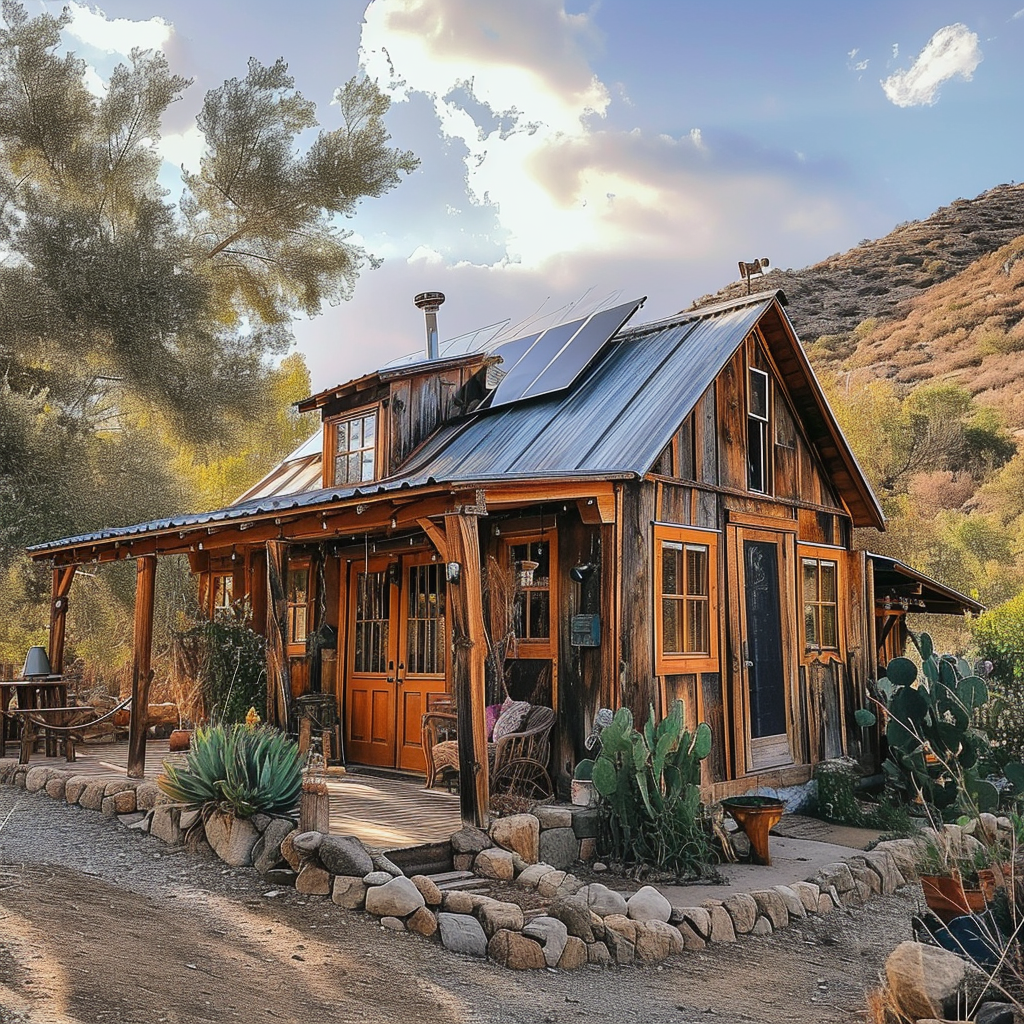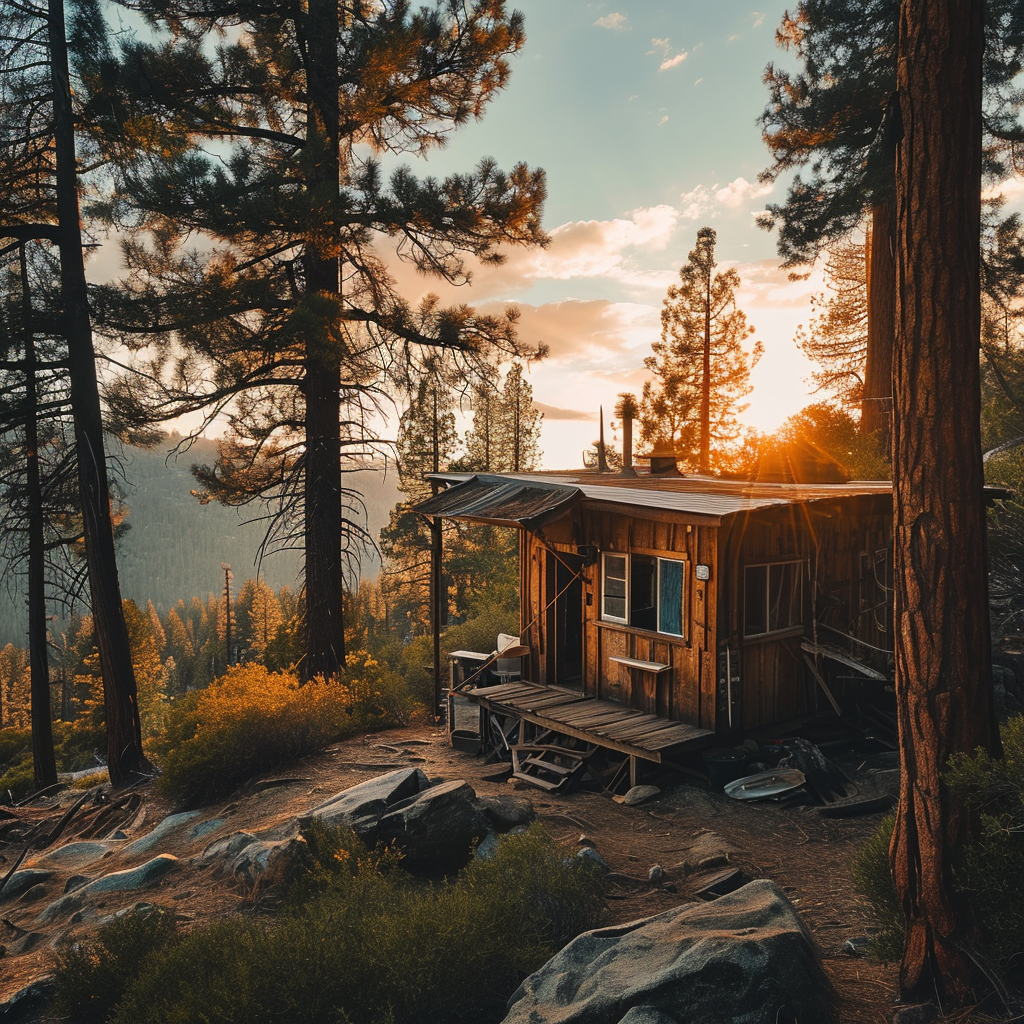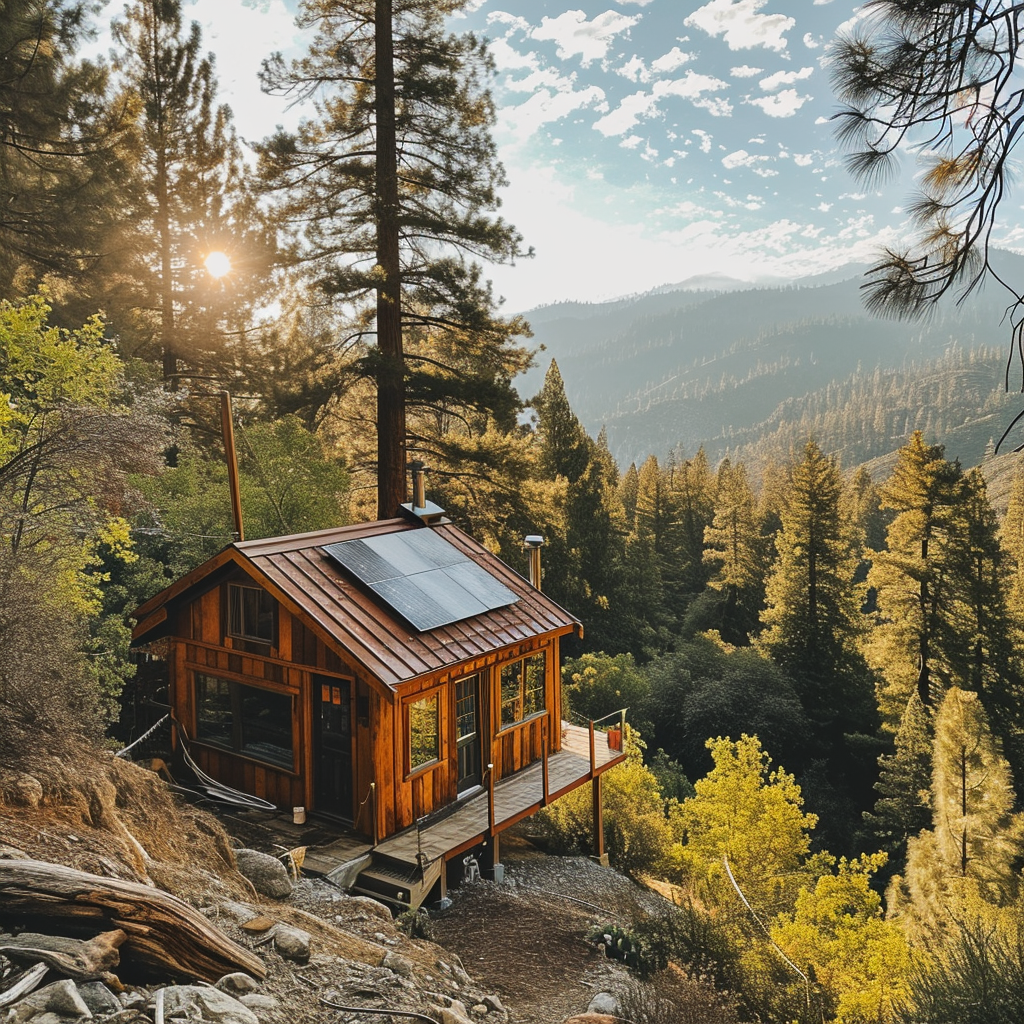Introduction
Are you pondering, ‘Can I Go Off Grid In California‘? If so, you’re not alone. Many Californians are exploring the feasibility and benefits of off-grid living in the Golden State. This comprehensive guide delves into the essential aspects of off-grid life in California, offering insights into sustainable living practices. From understanding the nuances of power generation and water supply to navigating local regulations and embracing community support, we cover all the critical elements you need to know. Whether you’re a seasoned off-grid enthusiast or a curious newcomer, our detailed exploration provides valuable tips and resources to help you achieve a successful and environmentally conscious off-grid lifestyle in California.
Understanding Off-Grid Living
Living off-grid in California is possible and can provide independence from traditional power sources. Here’s what you need to know:
- Power Generation: Solar panels, wind turbines or hydroelectric power systems generate electricity.
- Water Supply: Find water through wells, rainwater harvesting or natural bodies of water.
- Waste Management: Composting toilets, greywater systems, and recycling are essential.
- Food Production: Grow food organically or with hydroponics.
- Internet Connectivity: Satellite internet or cellular data plans with coverage.
- Community Support: Connect with like-minded individuals in off-grid communities.
Off-grid living needs planning and adaptation. Land with access to sunlight, water and climate conditions is key. Plus, knowledge of renewable energy and sustainable practices is vital.
For those considering going off-grid in California, here are some tips:
- Research local regulations and permits.
- Invest in sustainable infrastructure.
- Learn from experienced residents.
- Develop self-sufficiency skills.
By following these suggestions, individuals can enjoy off-grid living in California with minimal environmental impact and a sense of self-reliance. With dedication and adaptability, a unique and fulfilling lifestyle awaits!

Exploring the Viability of Off-Grid Living in California
Living off-grid in California? It’s possible and worth it! The state has lots of natural resources and a great climate. Plus, there are incentives for renewable energy systems and eco-friendly communities that support self-sustainability.
You need to consider:
- availability of resources
- cost of living
- environmental impact
- legal considerations
Fun fact: California ranks number one in installed solar capacity in the U.S.A. Go off-grid in California and say goodbye to electric bills and hello to your social life!
Pros and Cons of Going Off-Grid in California
Text: Pros and Cons of Going Off-Grid in California:
- Energy Independence – a great plus!
- Environmental Sustainability – great for the planet.
- Lower Utility Bills – save money.
- Increased Self-Sufficiency – feel empowered.
However, there are downsides too.
- Initial Cost – can be costly.
- Limited Convenience – prepare to work hard.
- Maintenance Challenges – maintenance is key.
- Potential Permits and Regulations – know the rules.
Natural resources, water management, and local community support are extra considerations. Before going off-grid, evaluate your energy needs, plan for contingencies, and get familiar with local regulations.
Now you know the pros and cons. Decide if living off-grid in California sounds like a good fit. With preparation and planning, this lifestyle can be fulfilling and sustainable! Plus, why settle for just living off-grid when you can have the whole state of California to yourself?

Successful Off-Grid Living Examples in California
California is the ideal place to go off-grid! People have decided to disconnect from the traditional power grid and live independently, using renewable energy sources and sustainable practices. These individuals have found exciting ways to have comfort and convenience without the grid.
Here are some real-life examples of off-grid living in California:
- North Star Ranch in Grass Valley
- Kinetic Solar in Santa Cruz
One unique detail that stands out is the use of solar power technology. Many off-grid residents in California use solar panels for electricity. This clean and renewable source of energy enables them to have a comfortable lifestyle while reducing their carbon footprint.
If you’re thinking of going off-grid in California, here are some tips:
- Invest in solar panels – Solar power is a reliable and green energy solution. By taking advantage of the sun’s energy, you can generate electricity for your home without the grid.
- Use rainwater harvesting systems – California has droughts, so it’s important to find other water sources. Installing rainwater harvesting systems can help you collect and store rain to reduce dependence on municipal water supplies.
- Practice sustainable farming – Growing your own food reduces grocery bills and promotes self-sufficiency. Using organic farming and permaculture methods, you can create a sustainable food source in your backyard.
If you follow these tips, you can transition to an off-grid lifestyle in California while reducing your impact on the environment and feeling the freedom of self-reliance. Take the opportunity to join the growing community of off-grid pioneers in the Golden State. Make the switch to off-grid living and finally ignore all your neighbors’ annoying requests for sugar!
Tips and Resources for Transitioning to Off-Grid Living
Transitioning to off-grid living can be tough, especially in California. But with the right tips and resources, you can make a successful switch to a sustainable and autonomous lifestyle.
Try these:
- Solar Power: Invest in solar panels to use renewable energy and reduce reliance on the grid.
- Rainwater Harvesting: Install systems to capture rainwater for various needs.
- Composting Toilets: Eco-friendly toilets let waste decompose into nutrient-rich compost.
- Off-Grid Appliances: Get energy-efficient appliances specifically for off-grid living.
- Sustainable Food Production: Have a veggie garden or learn permaculture techniques to be self-sufficient and reduce grocery trips.
- Community Support: Join local off-grid communities or connect with like-minded people to share knowledge and experiences.
The government offers grants, rebates, and tax incentives to help with the transition. Plus, you get to reconnect with nature, reduce your environmental impact, and prioritize sustainable practices.
Did you know about the SGIP in California? It provides rebates for energy storage systems, encouraging residents to go off-grid and prioritize sustainability.
By following these tips, you can make the shift smoothly and enjoy the benefits of off-grid living in California. So, why not make the switch and avoid traffic forever?

Conclusion: Is Off-Grid Living in California a Feasible Choice for You?
Living off-grid in California can be a great choice for those looking for a sustainable lifestyle. It offers the opportunity to be energy independent due to abundant sunshine and progressive policies. However, there are some points to keep in mind before deciding.
The initial cost of setting up an off-grid system is an important factor. Solar panels and battery storage have become cheaper in recent years, but the investment can still be high. Also, ongoing expenses may be required for maintenance and replacement.
Water availability is another factor to consider. California has experienced droughts in the past, so living off-grid may mean relying on rainwater or well water. It is key to assess the reliability of these sources and have backup plans if necessary.
Local authorities may require permits or restrictions on alternative energy systems. Knowing and understanding these regulations beforehand is essential to avoid any legal issues.
Despite all this, there are people thriving while living off-grid in California. The Bennett family from Shasta County is a great example. They changed to an off-grid lifestyle over a decade ago, taking advantage of solar energy and sustainable practices. Today, they are self-sufficient and reducing their environmental impact.




